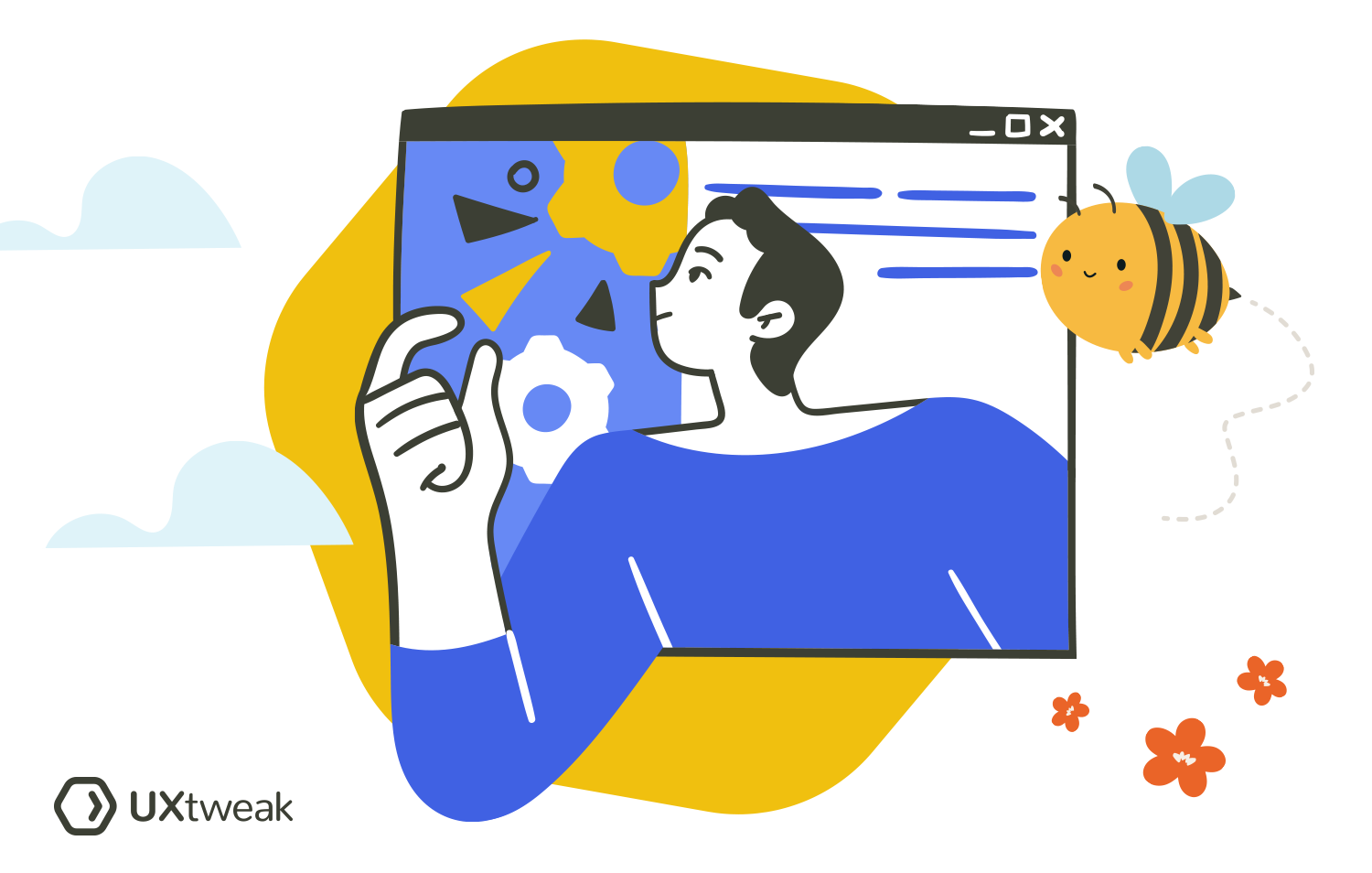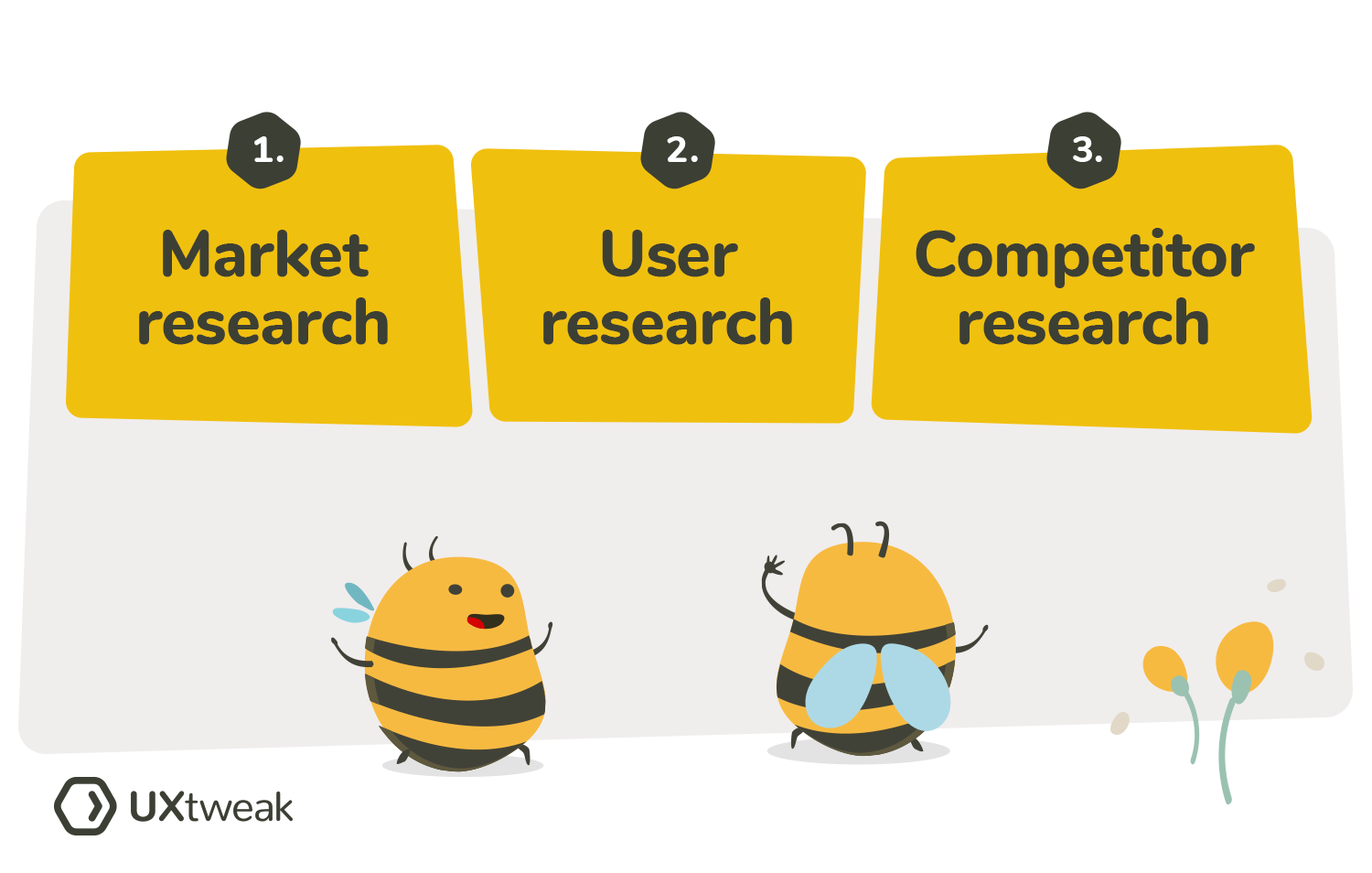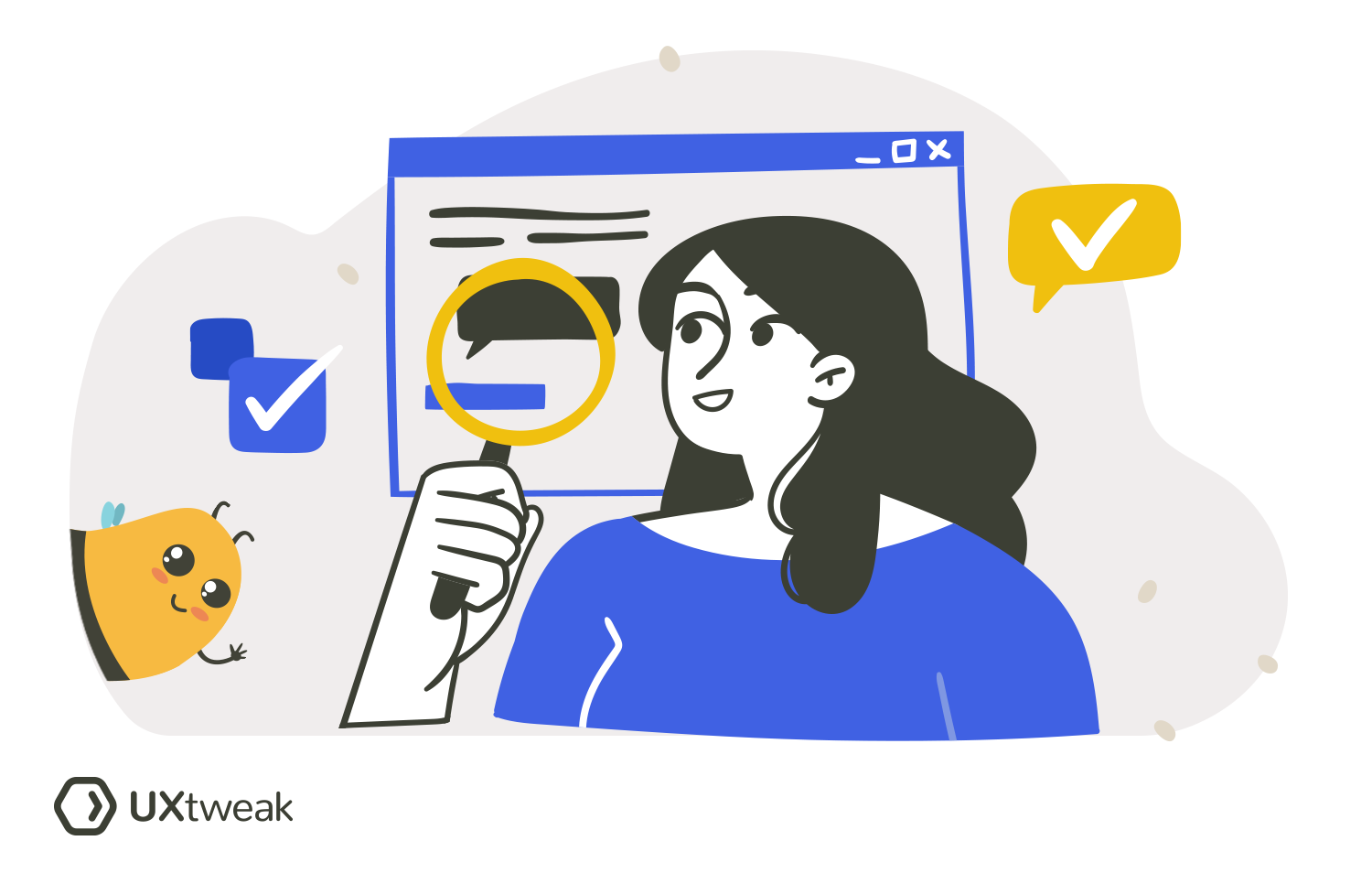Whether you’re creating a brand new product, or updating an old one with new cool features, product research should always be a part of the process.
It helps to validate the demand for your product in the market, generate ideas for improvement and make sure your final product is as user-centric as possible.
What is product research?
Product research is a process of gathering information about your target market, competition, users and their needs in relation to your future product. It is a vital part of the whole design and development process as it allows you to make product decisions backed by real data and create a product that satisfies users needs.
The goal of product research is to gather enough information to be able to draw conclusions about what user problems your product is going to solve and how it will do it better than your competitors. It also helps to ensure that you’re creating something that your market demands, not just giving life to a crazy idea that no one actually needs.
Product research is conducted using various product research methods, usually with the additional help of online product research tools.
Why is product research important?
Product research is a vital part of the product development process because it helps teams with the following tasks:
- Identifying customer needs: product research gives you an opportunity to learn more about your customers, their needs, wants and problems. Knowing that information and using it to make design decisions leads to higher customer satisfaction and loyalty.
- Understanding the competition: knowing what your competition does and why it appeals to customers, as well as what they lack, gives you a unique opportunity to gather insights on how you can improve your own product, make better features and fill those gaps.
- Generating ideas: in the process of product research you are always uncovering new insights and important details about your end-users, their habits, pain points, behavioral patterns etc. Using this information you can come up with new exciting ideas for solutions you’d never think about otherwise.
- Minimizing risks: product research can help businesses to reduce the risk of product failure by making sure they’re creating something meaningful from the beginning, identifying potential issues and addressing them before launch. This can save tons of time and money in the long run.
When to conduct product research?

In general, businesses should conduct this type of research whenever they need to make informed decisions about their product strategy. It is usually conducted at the beginning of the product creation process to gather insights and inform further decisions.
However, depending on the type of product research, sometimes it takes place in the middle and throughout the design process, as well as right before the launch.
You should conduct product research:
- When developing new products – product research will help to identify new product ideas and opportunities in the market, analyze competition and get to know your future users.
- When improving existing products – before making any changes to an existing product it’s important to identify areas of improvement, address customer feedback and gather data to inform the needed changes.
- When entering new markets – when aiming to enter a new market, product research can help to understand the local market conditions, competition, customer behavior and specifics of the target group.
Types of Product Research

We can define 3 main types of product research:
- Market research
- User Research
- Competitor Research
Each of the types has their own goal and focus, let’s take a look at them below.
Market Research
Market research is the process of gathering information about your target markets and the customers. It involves the analysis of latest market trends, the demand for your product as well as past and current market conditions. This type of research helps to make sure you’re creating a product that people actually need and gives you enough data to inform the future design decisions.
There are various research methods that can assist you in conducting market research for your product. Some of them include product feedback surveys, focus groups, interviews and just regular online research.
User Research
This type is focused on empathizing with your user, getting to know them, their habits, mental models, pain points and needs in relation to your product. User research is conducted with the help of various qualitative and quantitative user research methods and online research tools like UXtweak.
User research is the foundation of any type of product as it allows you to make sure it will provide great user experience and will satisfy customers’ needs perfectly. It is usually conducted at the early stages of creation and helps teams gather enough details about their target users to inform further design decisions.
Competitor research
Competitor research is the type of product research that’s focused on getting to know your competitors, their strengths and weaknesses as well as the strategies they use on the market. This also includes analyzing their products, specific features, pricing, offering, design etc.
Doing research on your competitors can help to identify new opportunities in the market, define your threats and develop a competitive design and development strategy. Competitor research is usually conducted with the help of simple online search and analysis of their website, apps and social media platforms or through surveys and user interviews.
However, there are also more advanced methods such as Competitive Usability Testing that allows you to test your competitor’s products for usability and learn from their mistakes.
How to do product research?

You can conduct product research following the 6 steps below:
- Define your research goals
- Get to know your users
- Choose your product research method and gather data
- Develop and test your concept
- Create and test a prototype of the final product
We’ll describe each of the steps further below.
1. Define your research goals
To begin your product research process you’ll first need to define what you’re looking to find out and how you’re planning to use the collected data. Starting with the goal definition will help to define the right methods for your research and focus on things that matter.
Here’s how your product research goal could look like:
- Determining the key features for our new mobile app
- Conducting market research to analyze the demand for our product
- Identifying common problems of our target audience and how our product could solve them
2. Get to know your users
Start by identifying who your ideal users are, their demographics and segments. When you have this figured out, you’ll need to conduct a significant amount of user research to get to know them better.
Your goal here is to empathize with them, learn about their pain points, habits, wants and needs. This information will help you to gather data to back up future design decisions and make sure your product is built to satisfy those needs.
There are various user research methods you could use for that, however, at this stage we recommend you to focus on open-ended research and gathering qualitative data. Surveys, user interviews, customer journey maps and other qualitative research methods will help you with that.
3. Research the market
Take the time to research the current conditions of the market, identify growing trends, define your main competitors and what they’re doing. This will help you to focus on your strengths, define potential threats and growth opportunities to hop on.
Validate how saturated the market is and if there’s a demand for your future product. Give special attention to your competitors: what are they doing, how are they doing it and, most importantly, what are they lacking?
You can conduct such research using the information available online, by browsing Google and analyzing the competitors’ products and marketing channels.
4. Choose your product research method and gather data
To top off the data collected from market research you can conduct product research using one of the methods below. Deciding on which one to choose will depend on the goal of your project and the stage your product is currently at.
Here are some of the most common product research methods:
- Focus groups
- Surveys
- Interviews
- Concept tests
- Price testing
- A/B testing
- Competitive analysis
- Usability testing
Learn more about product research methods.
Make sure to once again mostly stick to open-ended questions and formulate them in a way that lacks bias. Further in this guide we’ll give some examples of good product research questions.
5. Develop and test your concept
Create a product concept that satisfies the needs of your target audience based on the data you’ve gathered. To determine whether your product concept is appealing to users and to come up with potential ideas for improvement, run a small-scale test of it.
6. Create and test a prototype of the final product
When you have your concept figured out, it’s time to start working on your product prototype. Base your design decisions on the data collected during the previous stages of product research and test prototype with users throughout the process.
There are dedicated tools that can help you set up a prototype test in just a couple of clicks! However, they give you a unique opportunity to see how users interact with your designs, where they struggle or feel lost.
The data collected from such user tests will help you spot usability issues early on and refine the prototype so that it’s ready for development.
Product research questions

Coming up with a list of good product research questions is already winning half the battle.
However, it’s not as easy as it may seem. When writing your product research questions focus on the research objectives and the product itself, as well as what stage of design and development process you’re currently at.
And although there’s no ultimate list of product research questions that suits all, we’ve prepared a couple examples of questions divided into different categories, depending on what you’re looking to find out:
Competitor research
- What product do you consider to be an alternative to ours?
- How would you compare this product to our competitors?
- Have you used a similar feature before?
- Compared to our competitors, is our product quality better, worse, or about the same?
Market and product research
- What was your first impression of the product?
- Would you purchase this product?
- Would you recommend this product to someone else?
- Is there anything we can add to make the product better?
- Are there any other features that you wish the product had?
- How do you think we could improve this feature?
- What problems do you usually face when completing this specific task?
- What feature did you expect but not find?
User research
- How do you currently go about this task/problem?
- What are you currently doing to make this task easier?
- Tell me about the last time you’ve tried to complete this task, how did it go?
Tips for developing product research questions
- Ensure that the questions are open-ended and avoid leading questions to eliminate bias. Learn how to write unbiased survey questions.
- Keep the questions focused on the research objectives and avoid going off-topic
- Use a mix of qualitative and quantitative research methods to gain a comprehensive view on the product and user’s expectations
- Test the questions with a small group of users before conducting the research to ensure clarity and pinpoint potential issues

